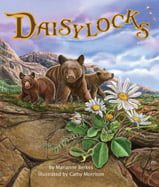Alignment to Standards for NH

| Grade | Number | Standard |
|---|---|---|
| 2 | S:ESS1:2:2.1 | Recognize that solid rocks, soils, and water in its liquid and solid states can be found on the Earthês surface. |
| 2 | S:ESS1:2:2.3 | Recognize that Earth materials have a variety of properties, including size, shape, color and texture. |
| 2 | S:ESS1:2:6.2 | Describe rocks and soils in terms of their physical properties. |
| 2 | S:ESS4:2:3.2 | Identify environments that are natural, such as a forest, meadow, or mountains and those that have been built or modified by people, including cities, roads, farms, and houses. |
| 2 | S:LS2:2:1.1 | living things can be found almost anyplace in the world; and that specific types of environments are required to support the many different species of plant and animal life. |
| 2 | S:LS2:2:2.1 | Identify the resources plants and animals need for growth and energy, and describe how their habitat provides these basic needs. |
| 2 | S:LS3:2:3.2 | there are different species of living things in various places around the world. |
| 2 | SS:GE:2:3.2 | components and distribution of ecosystems, e.g., desert or rain forest. |
| 4 | S:ESS1:4:2.3 | Given information about Earth materials, explain how their characteristics lend themselves to specific uses. |
| 4 | S:ESS1:4:2.4 | Given certain Earth materials (soils, rocks, or minerals) use physical properties to sort, classify, and/or describe them. |
| 4 | S:LS1:4.2.2 | function of the plant structures responsible for food production, water transport, support, reproduction, growth and protection. |
| 4 | S:LS1:4:2.4 | Identify the basic needs of plants and animals in order to stay alive (i.e., water, air, food, space). |
| 4 | S:LS1:4:3.3 | reproductive process of plants, explaining some plants grow from seed, while others grow from the parts of other plants. |
| 4 | S:LS2:4:1.1 | Describe how the nature of an organismês environment, such as the availability of a food source, the quantity and variety of other species present, and the physical characteristics of the environment affect the organismês patterns of behavior. |
| 4 | S:LS2:4:3.1 | plants and animals interact with one another in various ways besides providing food, such as seed dispersal or pollination. |
| 4 | S:LS2:4:3.2 | Describe ways plants and animals depend on each other (e.g., shelter, nesting, food). |
| 4 | S:LS3:4:3.2 | for any particular environment, some kinds of animals and plants survive well, some less well, and some cannot survive at all. |
| 4 | SS:GE:4:3.4 | distribution of ecosystems: location of certain plants/animals, food chain |